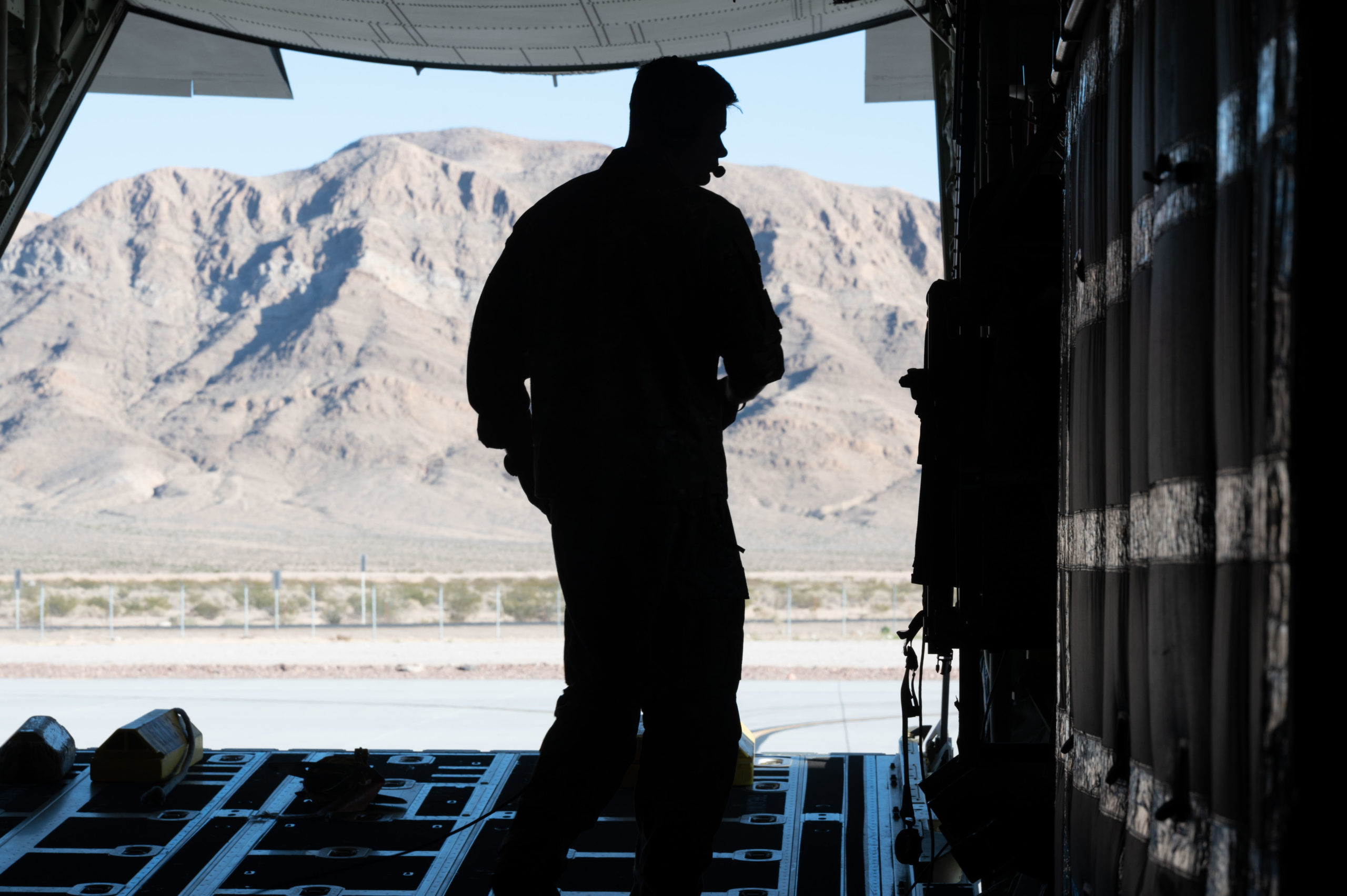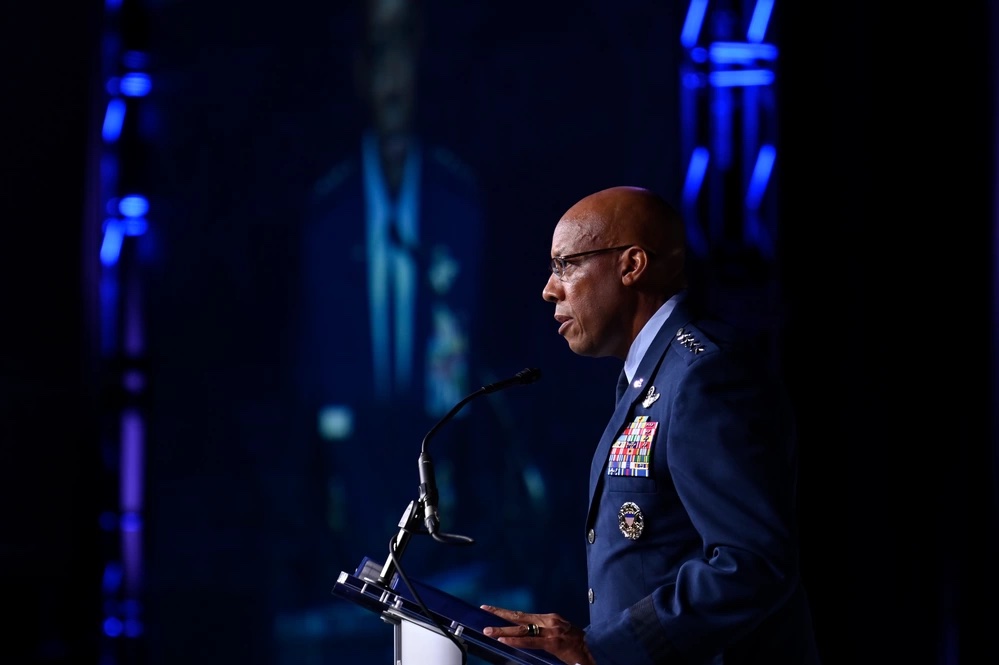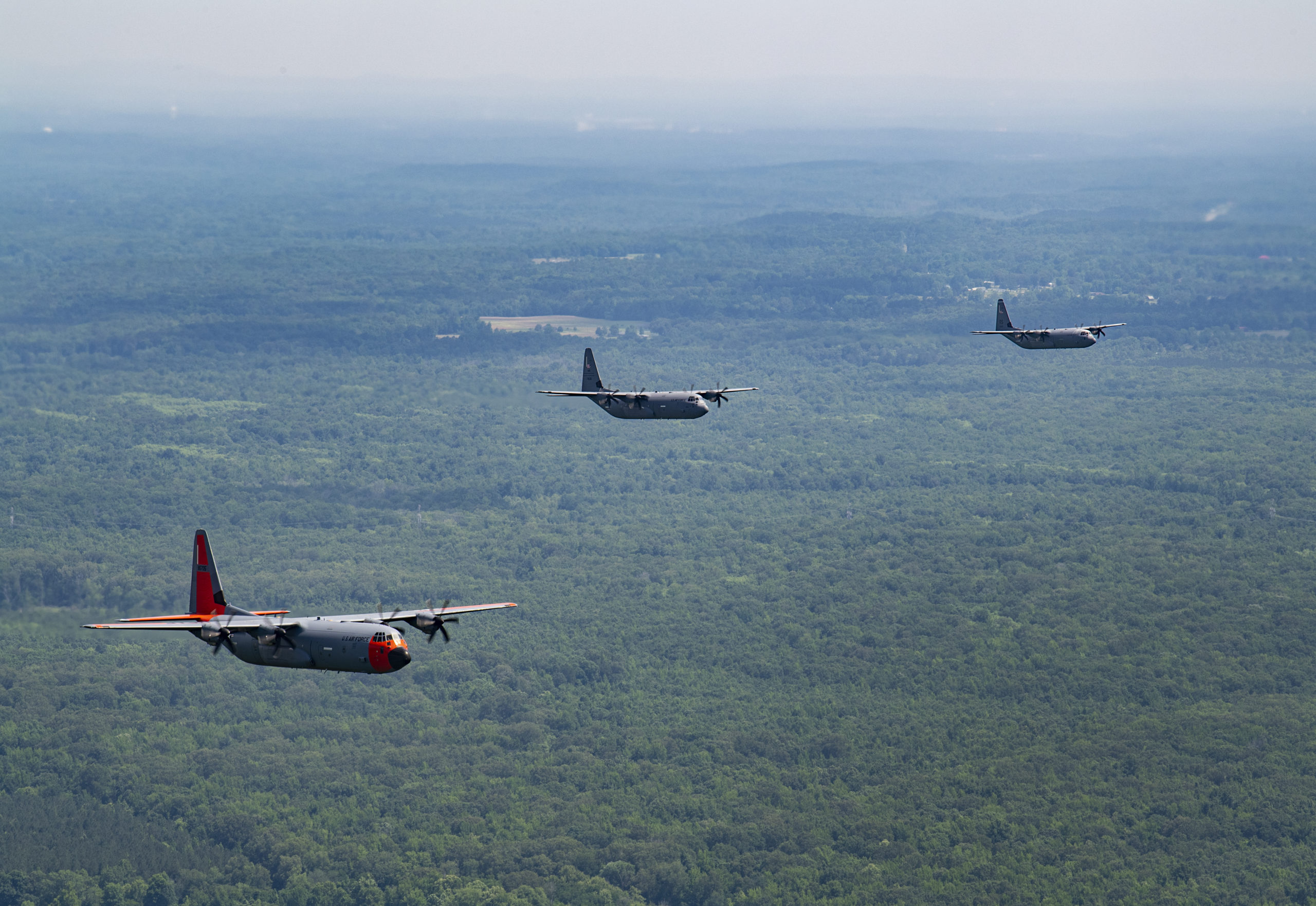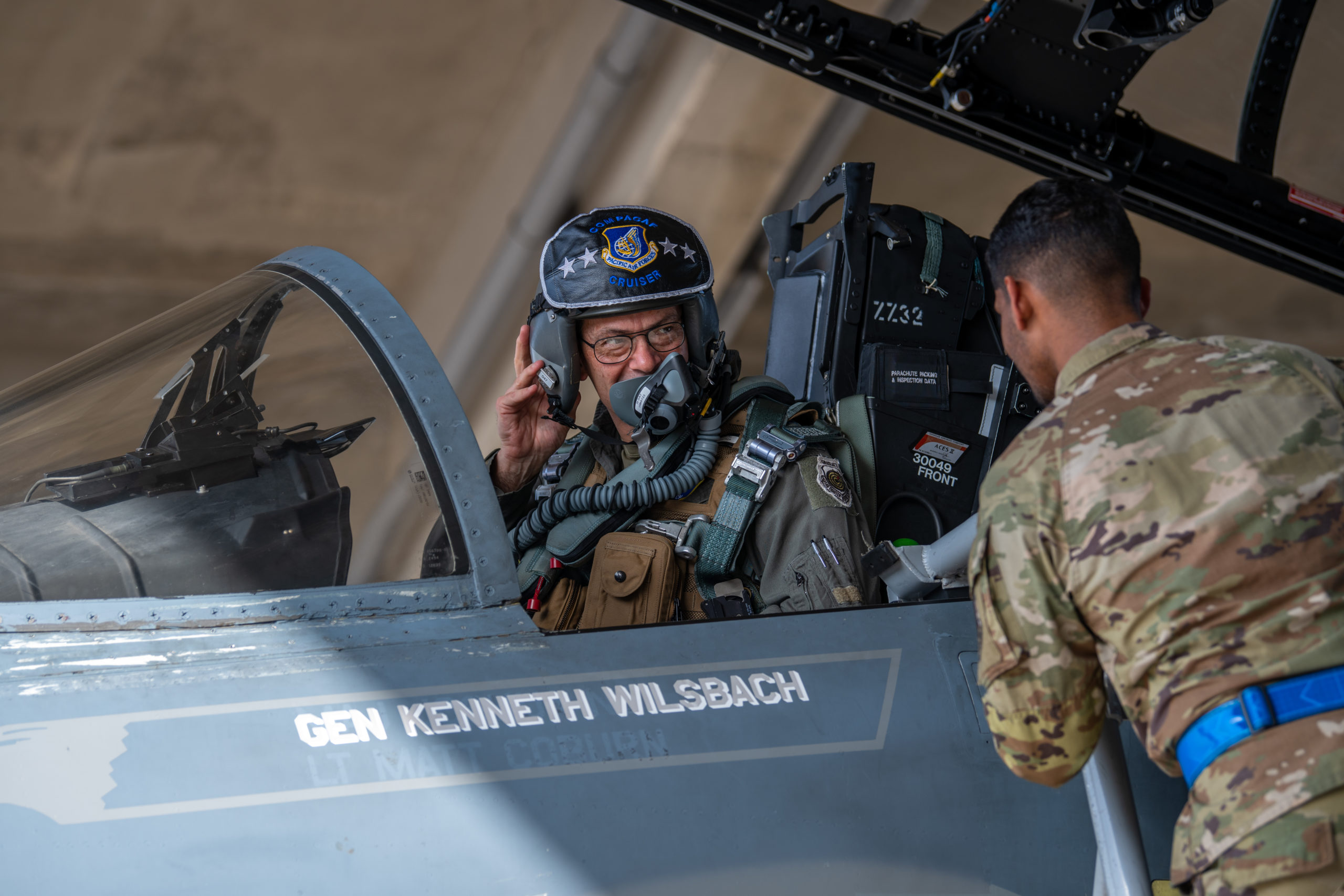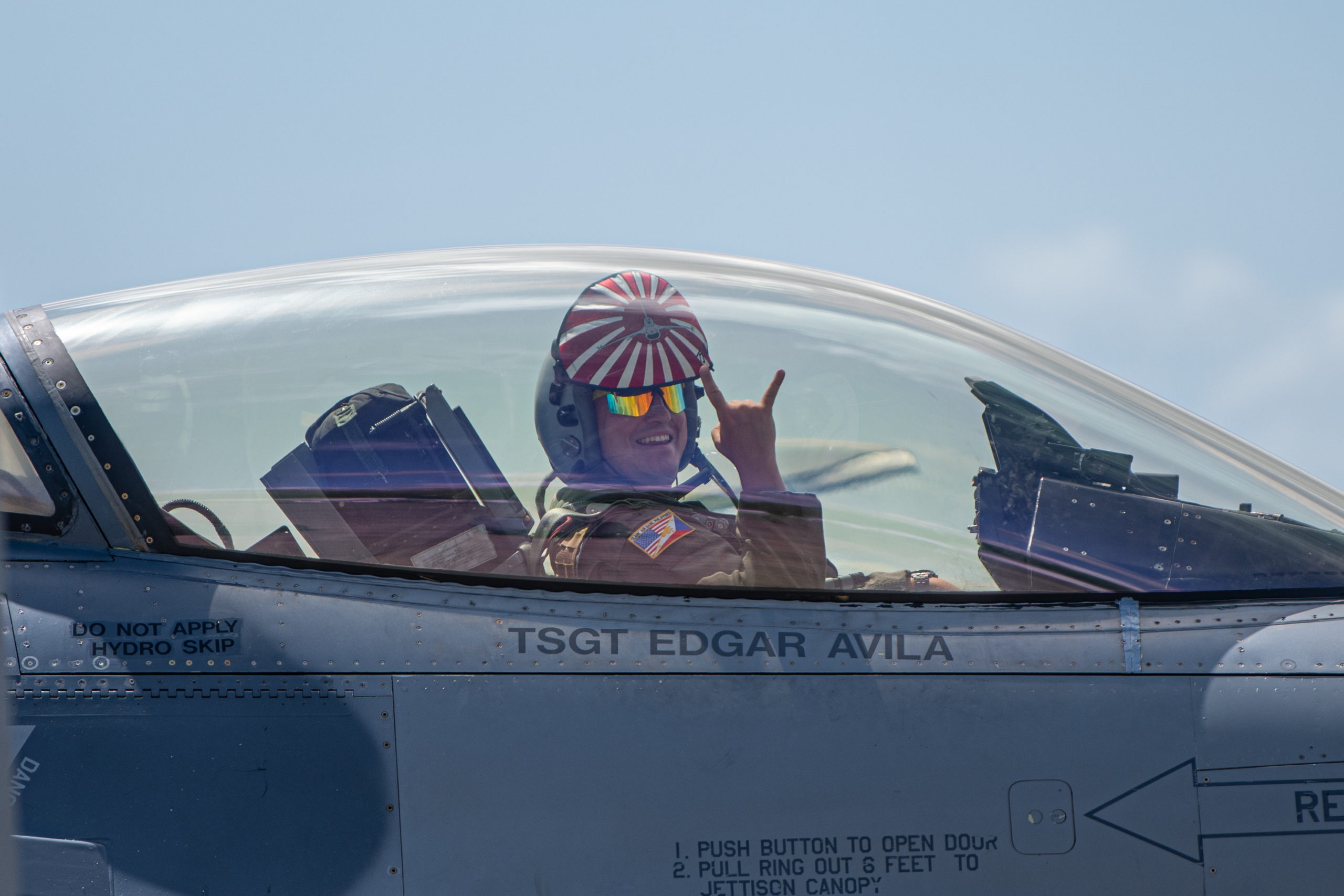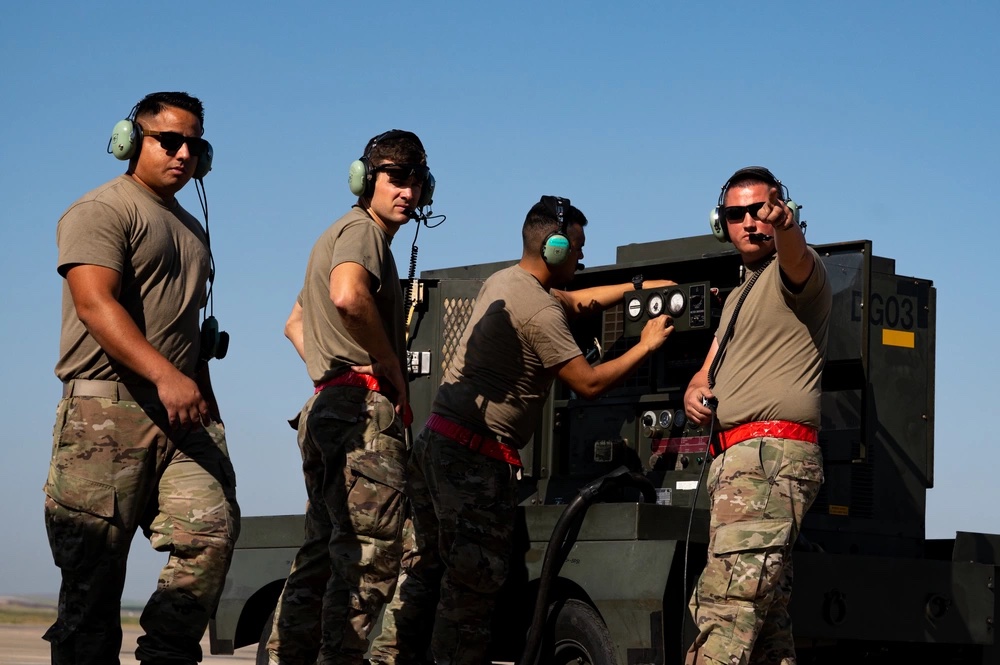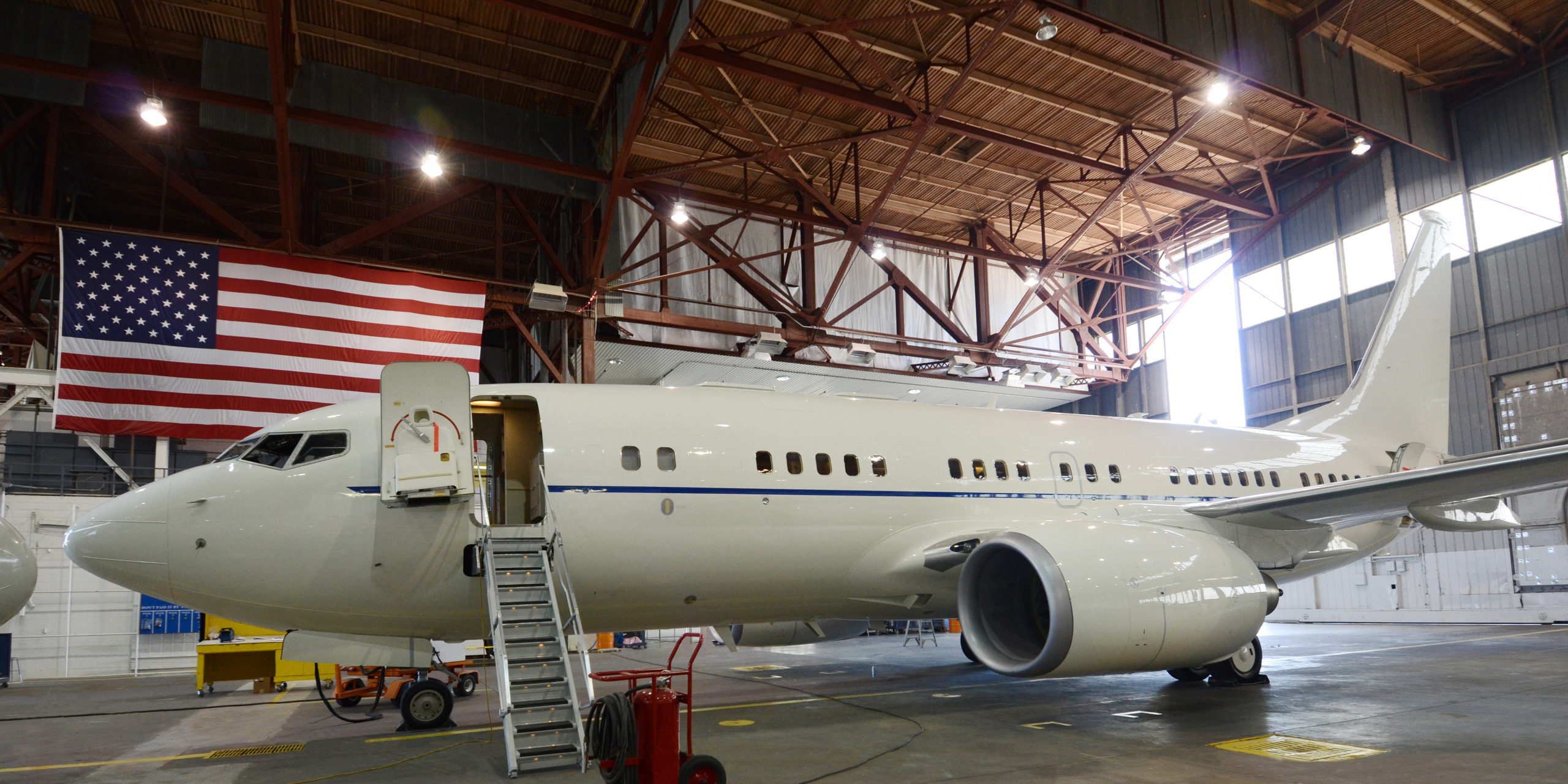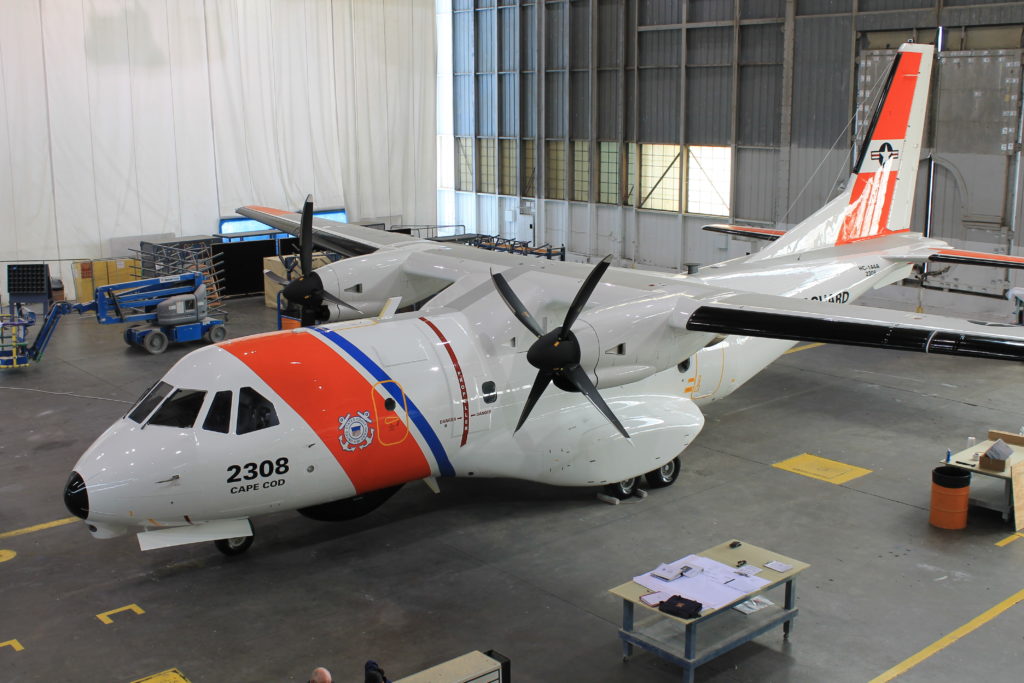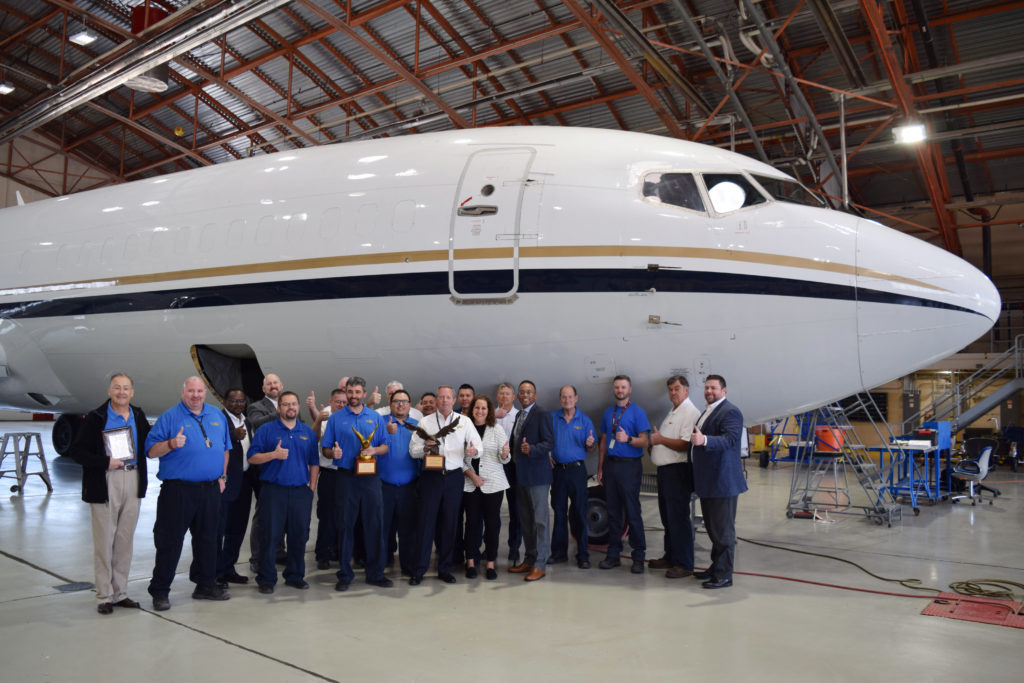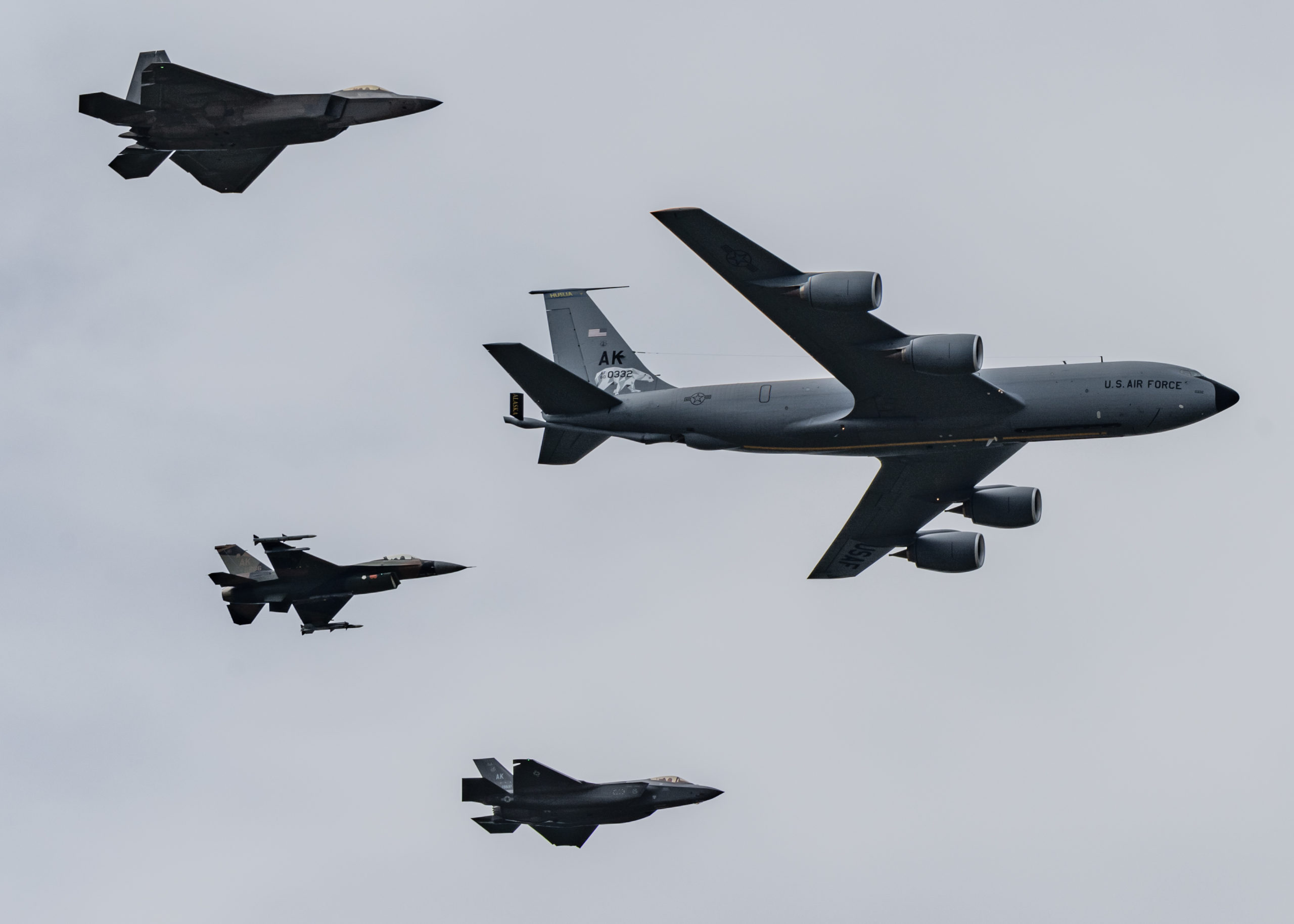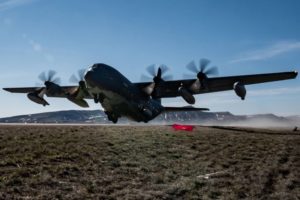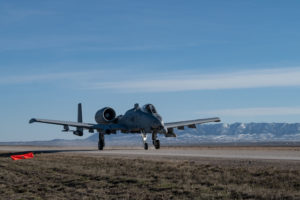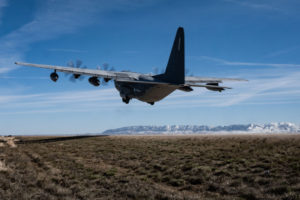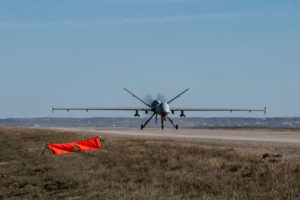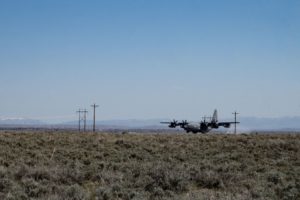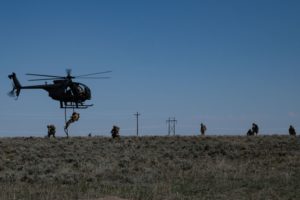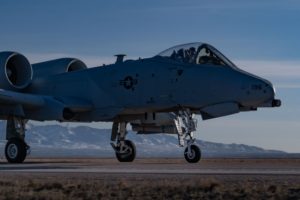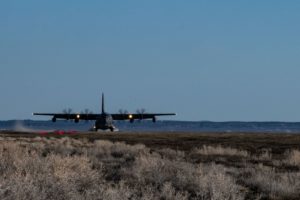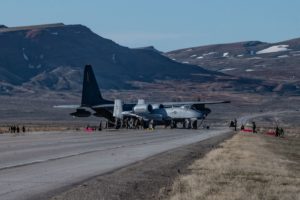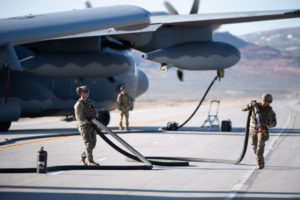More than 50 Air Force specialties—from bomber maintenance to cryptologic language analyst to dental hygienist—are eligible for retention bonuses worth up to $100,000 this year, down from 63 last fiscal year.
The Air Force’s Selective Retention Bonus program offers extra pay to Airmen whose skills are in short supply. The numbers change annually. In 2021, as retention spiked amidst the COVID-19 pandemic, only 37 Air Force Specialty Codes were eligible, down from 72 in fiscal 2020, and 115 in 2019. The number bounced up last year.
For this fiscal year, the 51 specialities eligible include some that are perennially undermanned, like Explosive Ordinance Disposal, Survival, Evasion, Resist, and Escape (SERE), and pararescue. Also in short supply: Analysts who speak Russian, Chinese, or Persian; maintainers for the KC-46 and B-52; cyber specialists; and a dozen medical specialties, ranging from mental health services to diagnostic imaging.
New to the bonus list are loadmasters for the HC-130J and MC-130J.
Among those not eligible any longer are 12 Space Force specialty codes.
The formula for bonus calculations is a service member’s monthly basic pay at the time of reenlistment multiplied by the length of the reenlistment in years (capped at six) and multiplied again by a factor, which varies depending on the service’s specific needs. Urgency and a member’s experience level can both influence that number. Experience level is referred to as a zone.
The maximum bonus is $100,000, with a lifetime cap of $360,000.
The full list of AFSCs and corresponding career fields is as follows:
| SPECIALTY CODE | CAREER FIELD | ZONE A | ZONE B | ZONE C | ZONE E |
| 1A2X1Q | Aircraft loadmaster – HC-130J | 2 | 2 | 0 | 0 |
| 1A2X1Z | Aircraft loadmaster – MC-130J | 2 | 2 | 1 | 0 |
| 1A8X1G | Airborne Cryptologic Language Analyst – Chinese | 3 | 3 | 2 | 0 |
| 1A8X1I | Airborne Cryptologic Language Analyst – Russian | 2 | 2 | 2 | 0 |
| 1A8X1K | Airborne Cryptologic Language Analyst – Persian | 1 | 0 | 0 | 0 |
| 1B4X1 | Cyber Warfare Operations | 5 | 4.5 | 4 | 3 |
| 1C3X1 | Command and Control Operations (C2 OPS) | 0 | 1.5 | 1 | 0 |
| 1C5X1 | Command and Control Battle Management Ops | 1 | 1 | 0 | 0 |
| 1C5X1D | Weapons Directors | 3 | 4 | 3 | 0 |
| 1D7X1B | Cyber Defense – Systems Operations | 1 | 1 | 1 | 0 |
| 1D7X1D | Cyber Defense – Security Operations | 1 | 1 | 1 | 0 |
| 1D7X1Z | Cyber Defense – Software Development Operations | 5 | 4.5 | 4 | 3 |
| 1D7X2F | Spectrum Defense Operations – Spectrum Operations | 1 | 0 | 0 | 0 |
| 1N3X1G | Cryptologic Language Analyst – Chinese | 3 | 2 | 1 | 0 |
| 1N3X1I | Cryptologic Language Analyst – Russian | 3 | 2 | 1 | 0 |
| 1N3X1K | Cryptologic Language Analyst – Persian | 2.5 | 0 | 0 | 0 |
| 1N4X1A | Cyber Intelligence – Analyst | 3 | 2 | 2 | 0 |
| 1N8X1 | Targeting Analyst | 2 | 2 | 1 | 0 |
| 1T0X1 | Special Warfare – SERE specialist | 5 | 4.5 | 4 | 3 |
| 1Z1X1 | Pararescue | 5 | 4.5 | 4 | 3 |
| 1Z2X1 | Combat control | 5 | 4.5 | 4 | 3 |
| 1Z3X1 | TACP | 5 | 4.5 | 4 | 3 |
| 1Z4X1 | Special Reconnaissance | 5 | 4.5 | 4 | 3 |
| 2A375 | Advanced Fighter Aircraft Integrated Avionics | 0 | 2 | 2 | 0 |
| 2A377 | Tactical Aircraft Maintenance – 5th Generation | 0 | 0 | 1 | 0 |
| 2A378 | Remotely Piloted Aircraft Maintenance | 0 | 2 | 2 | 0 |
| 2A3X5B | Advanced Fighter Aircraft Integrated Avionics – F-35 | 1.5 | 2 | 0 | 0 |
| 2A5X1A | Airlift/Special Mission Aircraft Maintenance – C-20/C-21/C-22/C-37/C-40/E-4/VC25B/C-130/C-27J | 2 | 0 | 0 | 0 |
| 2A5X4C | Refuel/Bomber Aircraft Maintenance – KC-46 | 2 | 2 | 0 | 0 |
| 2A5X4D | Refuel/Bomber Aircraft Maintenance – B-52 | 0.5 | 0.5 | 0 | 0 |
| 2A5X4F | Refuel/Bomber Aircraft Maintenance – B-2 | 1 | 1 | 0 | 0 |
| 2M0X0 | Missile and Space Systems Maintenance | 0 | 0 | 0 | 1 |
| 2M0X2 | Missile and Space Systems Maintenance | 1 | 0 | 1 | 0 |
| 2W2X1 | Nuclear Weapons | 0 | 1 | 1 | 0 |
| 3E5X1 | Engineering | 1 | 1 | 0 | 0 |
| 3E8X1 | Explosive Ordinance Disposal | 5 | 4.5 | 4 | 3 |
| 3P0X1A | Military Working Dog Handler | 1 | 0.5 | 0 | 0 |
| 3P0X1B | Combat Arms Training and Maintenance | 1 | 1 | 0 | 0 |
| 4C0X1 | Mental Health Service | 1 | 1 | 1 | 0 |
| 4H0X1 | Respiratory Care Practitioner | 1 | 0.5 | 0.5 | 0 |
| 4J0X2A | Orthotics | 0 | 1 | 1 | 0 |
| 4N0X1C | Aerospace Medical Service – Independent Duty Medical Technician | 0 | 0.5 | 0 | 0 |
| 4N0X1D | Allergy/Immunization Medical Technician | 0 | 1 | 0 | 0 |
| 4N0X1F | Flight and Operational Medical Technician | 0 | 1 | 0.5 | 0 |
| 4N1X1C | Surgical Service – Orthopedics | 0 | 1 | 0 | 0 |
| 4N1X1D | Surgical Service – Otolaryngology | 3 | 2 | 2 | 0 |
| 4P0X1 | Pharmacy | 0.5 | 0 | 0 | 0 |
| 4R0X1A | Diagnostic Imaging – Nuclear medicine | 1 | 1 | 0 | 0 |
| 4R0X1C | Diagnostic Imaging – MRI | 0 | 2 | 0 | 0 |
| 4V0X1S | Ophthalmic | 0 | 0 | 1 | 0 |
| 4Y0X1H | Dental hygienist | 0 | 1 | 1 | 0 |
